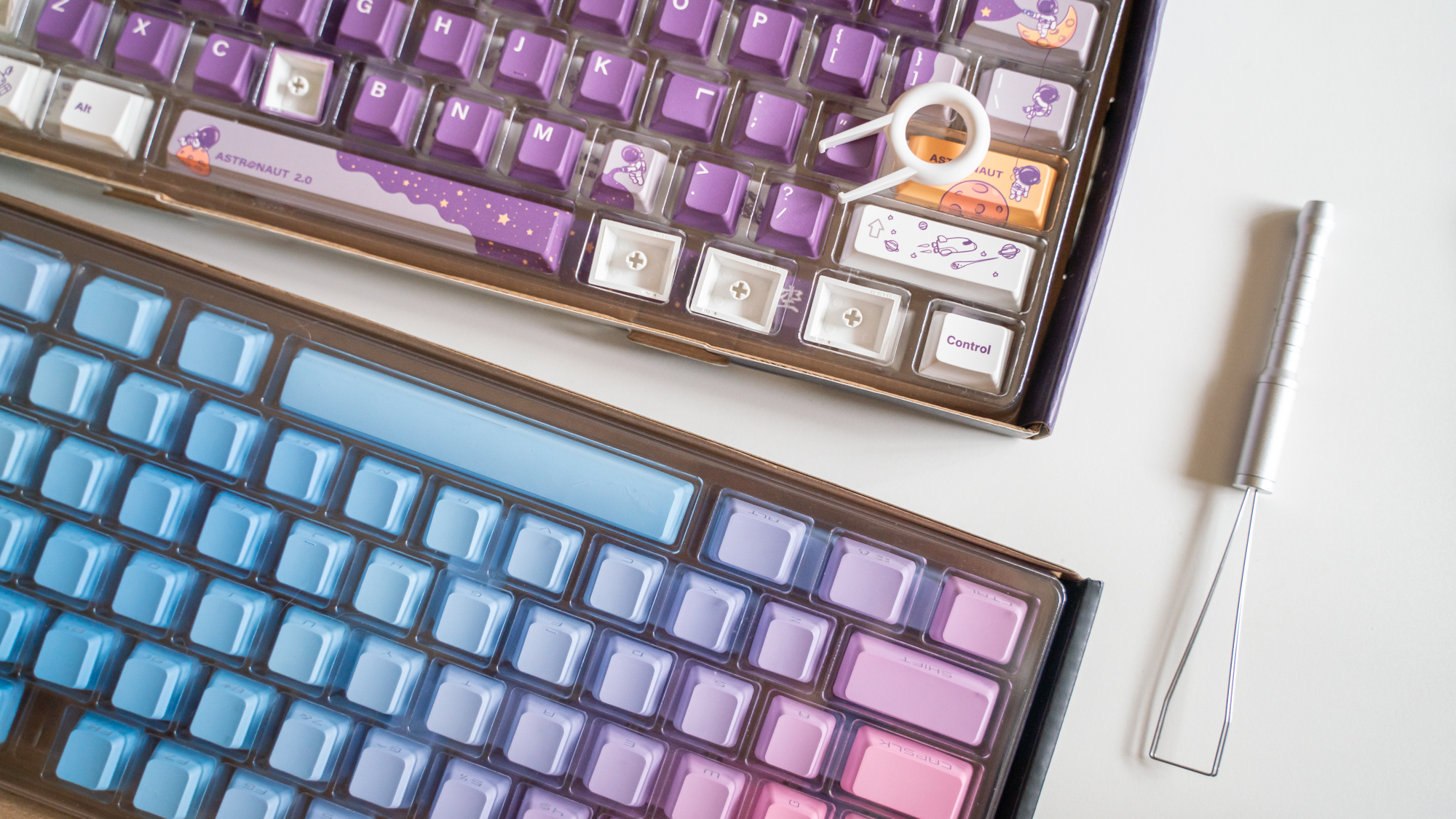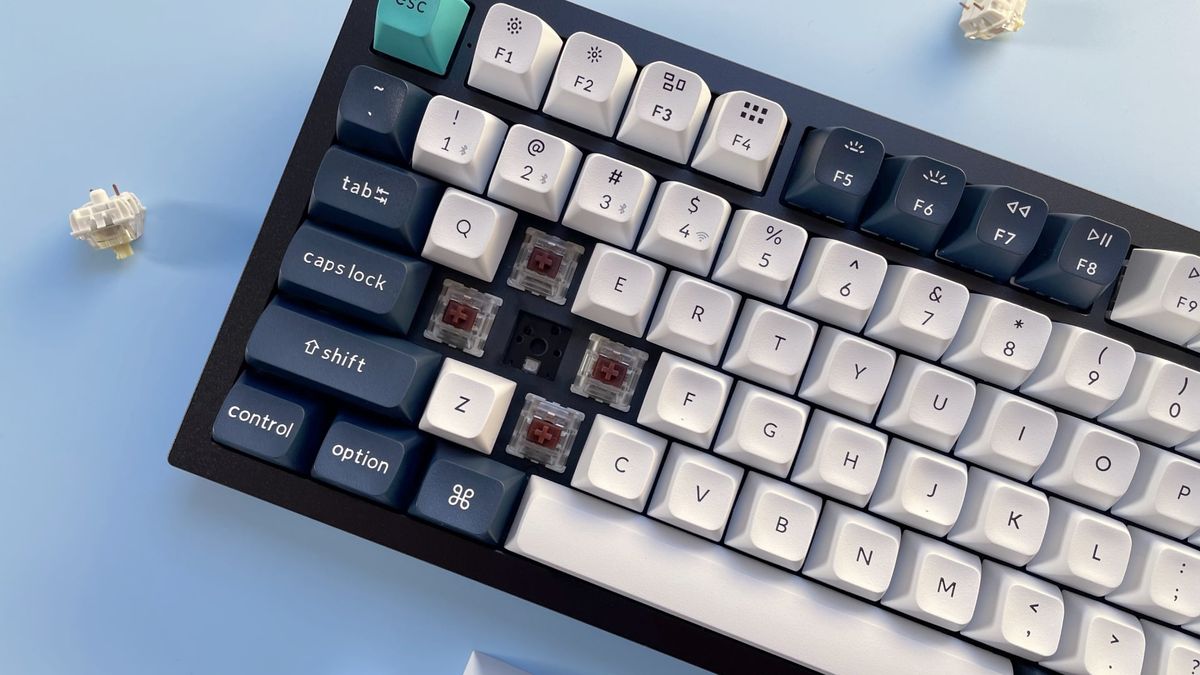I’m sure you’ve heard it from a passionate friend or unsolicited internet comment before: “If you want to get serious about gaming, or programming, or (insert another computer-related hobby or profession here), then you’ve got to get yourself a mechanical keyboard.”
But…is that even true? What makes a fancy, expensive mechanical keyboard better than your run-of-the-mill $25 board at Walmart?
Well, there are actually a few good reasons to shell out the extra cash for a quality keyboard. Depending on what you do when sitting in front of a PC or laptop, though, you might be better off saving some scratch. Here’s what you should know.
What’s a key switch?
A key switch is a small physical mechanism that sits under every key and tells your keyboard’s PCB (“printed circuit board”) when you’ve pushed something. It also gives the keyboard its unique typing feel and sound.
There’s certainly no shortage of switch types – mechanical and membrane being the most popular – and each has its own subtypes that modify the original formula for specific sounds and tactile feels.

Here’s a quick overview of some popular switch types and their characteristics:
- Chiclet: Essentially identical operation to a membrane key switch. It uses a mini rubber dome to transmit an electrical current when pressed. Often found on laptop keyboards, this switch produces a quick, snappy typing feel and an audible “click” sound – almost no customization potential.
- Capacitive: Measures changes in capacitance (energy) when keys are pressed. It is void of any mechanical components, so it typically has a very long lifespan. It still provides a small tactile bump when bottomed out, but it is not as clicky as mechanical switches – some options for customization.
- Mechanical: The crown jewel of modern keyboards – uses a spring-loaded mechanism to push metal pins down, completing a circuit and sending a signal to your keyboard’s PCB. Three usual suspects for mechanical switch types, linear, clicky, and tactile (with hundreds of further variations), make for unique typing sounds and feels. Very customizable.
- Membrane: Uses a small rubber dome under each key that, when pressed, transmits an electrical current to signify a keystroke. It is common in older keyboards and are quieter than most other switches with a soft typing feel. It is typically very affordable, but almost no customization options exist.
- Optical: Utilizes a beam of infrared light to detect when a key is pressed, sending a signal to the PCB. Super fast response times as they aren’t reliant on mechanical contact like membrane or chiclet keys. Typically, it has a very light and rapid typing feel with varying levels of “click.” Some customization options.
What mechanical keyboards do differently
So, what does a mechanical keyboard offer you? The number one theme is customization.
You’ll typically find three different mechanical switch flavors while searching for a new board: linear, clicky, and, my personal favorite, tactile.

Linear switches, also known as “red switches” because of their usual red hue, are the quietest of the bunch. They’re not quite silent, but they don’t give you that audible “click” you’ll get with a – you guessed it – clicky switch.
Clicky switches, or blue switches, do what they say on the tin. This is the typewriter-esque clicking and clacking you may hear coming from content creators or gamers’ setups. They’re the loudest of the group and have gained a cult following in recent years.
Tactile switches (or brown switches) are the middle of the pack. They provide a nice satisfying bump at the bottom where a red doesn’t, and they do so without the sharp click of a blue switch.
What if you don’t like the switch you decide on? I advise looking for the words “hot swappable” when you’re shopping. This means you can physically pull a key switch out of the board and replace it with a new one while the keyboard is still powered on.
You can also customize most keycaps or the outer shell over the switch that your finger actually touches. These are usually pretty cheap too, unless you go out of your way for handmade art.
Being able to replace both the switches and keycaps means your keyboard has essentially infinite durability as long as you don’t break the PCB and have the odd switch lying around for repairs.
This is why I love tinkering with mechanical keyboards.
You can design a look and feel you like, then give it a complete overhaul the next month and have essentially an entirely new keyboard for the price of a few switches and keycaps. Each configuration is a little project to work on, an experiment to be enjoyed or never used again.
But mechanical keyboards aren’t for everyone.
Why you shouldn’t use a mechanical keyboard
Sometimes, it makes a lot more sense to save money and roll with a budget membrane keyboard or push mechanics to the side in search of peak performance (looking at you, optical switches).
Or maybe you don’t like how mechanical boards look and feel. All valid reasons to ignore the hype and get a keyboard you’ll actually be happy using.
I love a good membrane or chiclet switch, like on the HyperX Alloy Core or Apple‘s Magic keyboard. If you like the smooth, speedy typing feel and don’t want to deal with customizations, there’s no reason you shouldn’t reach for one of these over a mechanical keyboard (besides negligible performance improvements that you won’t notice unless you play competitive games at the highest level).
And if you do want to compete at the best of your ability, you’re better off with something like an optical or hall-effect switch, which has those marginal performance gains over your mechanical-keyboard-using opponents that your game needs.
Plus, you can find all of the trinkets you’d find on mechanical keyboards, like volume wheels, dedicated media keys, and sound-dampening foam on keyboards with other switch types.
Mechanical keyboards aren’t one size fits all. I think they’re at their best doing the opposite, modeling a reflection of your ideas, feelings, and creativity. Make them bold and daring, paint your keycaps, tear out last week’s key switches and go shopping for fun switch names like “Gateron Jupiter Banana” (a real switch, by the way, a bit stiff but gives a nice “thock”).
Don’t buy one if you don’t care about that. If you just want something that gets the job done and puts letters on your screen, save your money. Some of the best keyboards out there are affordable and feature membrane, chiclet, or scissor switches, like the Cherry Stream Desktop.
But if you are interested in diving into the world of linear, clicky, and tactile, I recommend taking a look at keyboards like the Keychron Q6 Max, which is perfect for work or play at a desk with its hearty aluminum chassis and hot-swappable Gateron Jupiter switches, or the Drop ALT, a fantastic 65% travel board that cuts down on size, not functionality.
